Digital camera lenses 101: Understanding them and their reviews
Choosing a camera lens requires some basic understanding of how digital camera lenses work. In the same line, camera lens reviews are a great source of information and a big help in making the right decision. However, it is only true if you understand them well. If you don't, go on reading!
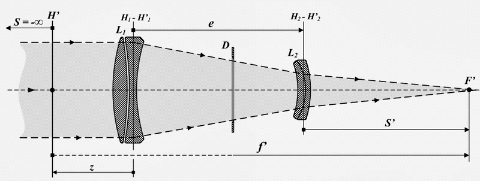 4 optical elements in 2 groups, simple!
4 optical elements in 2 groups, simple!You may want to rotate your phone in order to improve your browsing experience on this site.
Quick links
Start understanding digital camera lenses
In the introduction to camera lens types, you learnt to understand main characteristics of digital camera lenses.
However, we didn't talk much about their quality aspects. That's what we shall remedy now. Finally, you are going to invest a measurable amount of money in your main working tool. It'd better serve you well for years to come!
This instalment will help you understand how to tell good digital camera lenses from the rest when studying camera lens reviews.
Build quality
Sometimes you only have to hold an item in your hands to tell it's something valuable. You may know nothing about what it is made for, but the way how it is made and how it feels speaks volumes.
It's no different with camera lenses. A barrel made of metal or with metal elements seems more valuable than that of plastic. How the lens lies in the hand, how it responds to its controls, even what accessories are included with it – lens hood, for example – are all part of the first experience which can be the beginning of a wonderful friendship, erm, relation – or an abrupt end to it.
As significant as outer characteristics appear, what's inside a lens is still more important.
A quality camera lens has a complicated inner structure. Rather than being a single glass lens, it unites several optical elements combined in different groups to prevent or counteract defects described in detail below.
What materials are used to produce these elements, how precise they are manufactured and assembled, is also telling. A lens with an audible rumbling of its components inside the body is hardly destined to make many friends.
Optical quality
After a lens made a good first impression, it's still its internal qualities which confirm or overturn the verdict. In a wide-angle lens you'd pay attention to the following values.
Sharpness
Though not exactly of ultimate importance for landscapes, one would expect a quality lens being reasonably sharp. Even if it doesn't have to deliver finest details across the entire frame, this definitely would be welcome.
The most common method to test lens sharpness is to measure its resolving ability. This is often conducted by photographing patterns of alternating black and white lines (yes, boring it is). The more line pairs can be distinguished in the resulting image, the sharper is the lens.
These tests take measurements in different parts of the image, as lenses tend to lose contrast away from their centre. Hence, the resolution is usually evaluated in the frame centre, in its extreme corners, and midway between the two, roughly in the middle of the long frame edge.
Lenses undergo these tests at several apertures, from wide open to stopped down. Zoom lenses have to pass the same series of tests at several focal lengths across their range. Most meticulous tests also include measurements at different focusing distances, e.g., at close range and at infinity.
Results are presented in vertical-bar diagrams, sometimes accompanied by MTF charts either copied from lens specifications or actually measured under test conditions.
MTF stands for Modulation Transfer Function. If you are interested in understanding the latter, have a look at the video below.
Distortion
Besides producing converging verticals when tilted, some optics – not only wide-angle ones – tend to bend every straight line in an image. The effect may be taken care of in-camera by its software, can be corrected to some extent in post-processing, but better lenses don't show it altogether.
This is one of the few advantages digital photography has over its analogue relative. To correct the shortcomings of a lens attached to a traditional camera was unthinkable of. Digital camera lenses – and photographers working with them – have it much easier.
 |
 |
 |
Vignetting
- All lenses are prone to the natural light falloff at the edges of the frame. This causes image corners to appear darker. The effect is especially evident with wide-angle lenses. The difference in brightness between the centre and the corners under 0.8 EV may go unnoticed, or even be attributed to artistic intent. Some lenses, however, are much worse than that. Falloff values of nearly 3 EV are not unheard of. This means, the level of corner brightness is below 15% of that in the image centre. This would be too much even for correcting it in post.
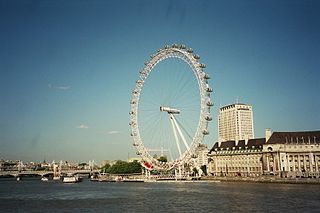 Example of heavy vignetting
Example of heavy vignettingChromatic aberration
The effect is caused by lens' inability to focus light of different wave lengths, that is, colours, exactly at the same pixel on the sensor. This may result in colour fringes appearing all over the image along the edges of areas with different contrast. The impression may vary from very disturbing to outright ugly. Many digital camera lenses include special apochromatic elements in their builds to prevent this from happening.
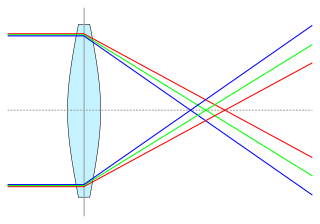
Lens flare
- If you tried your hand at shooting with the sun or other bright light sources in the frame, you are probably aware of hazy and (dis)coloured spots haunting your images. This is lens flare. It is often caused by light reflections inside the lens. Some pieces manage to create it even from scattered light. Other lenses may use special coatings on their glass elements to reduce it.
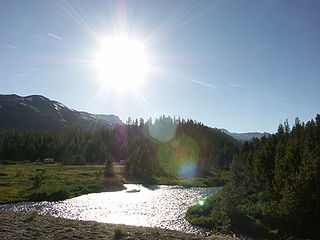 Camera lens flare in a landscape image
Camera lens flare in a landscape imageBokeh
- This term is "imported" from the Japanese and describes the artistic blur quality in unsharp areas of an image. The appearance of these areas can be only attributed to the camera lens at work, as they don't even exist in the reality. Wide-angle lenses are rarely good at it, but every once in a while...
 Camera lens bokeh example
Camera lens bokeh exampleI've just had to think about it as a glimpse into virtual reality in everyday life. Isn't it fascinating?
Tags: #cameralens #photocameras #photogear
More on photography equipment
- Cameras best suited for landscape photography
- Following the thread about what is most important for landscape photography equipment, let's discuss some worthwhile options.
- Landscape photography ♥ panoramic cameras
- Ever wanted to try one? Read about your current options!
- How to choose a camera lens
- Everything you need to know when looking for a new camera lens, in one place: manufacturers, mounts, formats, types, and how to understand all those mystic lens labels.
- Understanding digital camera lenses – and their reviews
- Understand how to tell good digital camera lenses from the rest when reading their reviews.
- Best camera lenses for landscape photography
- The last article on camera lenses presents some fine choices for selected cameras.
- Filters for landscape photography
- Learn how to use most useful landscape photography filters!
- Polarising filter
- One of the most striking photography filters available is hard to imitate and easy to master. Try it!
Digital camera lenses resources
- Camera lens reviews at DP Review
- Lens hub at the oldest site dedicated to digital photography out there. Their camera lens section isn't as exhaustive as that for cameras, but reviews are thorough, like you would expect.
- Photozone
- An extensive database of camera lens reviews.
- Camera lens scores & reviews at DxOMark
- Very technically oriented—you would need everything you learned here :)
Unattributed images on this page are sourced from Wikimedia Commons.
Tell me what you think!
Is it useful 👍? Awful 👎? Leave a message! Your comments help make this site better (and give me a kick—one way or another).
Popular articles
-
A kind of magic
If a digital picture has to be seen in the real world, printed on a real medium and displayed in a real showcase, its transition from RAW to real is better done in an old school image editor. Enter A…
-
A duck for a dog
If you got your own place on the Internet, helping your visitors find what they are looking for is a great way to engage them and keep them staying a bit longer. A custom site search can achieve just …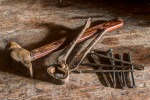
-
"Might as well have the best"
Aiming for better images? Think better lenses! This is your most important piece of gear, so you better get it sorted out. — Need some advice?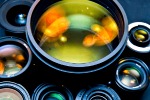
 Become a patron for
Become a patron for